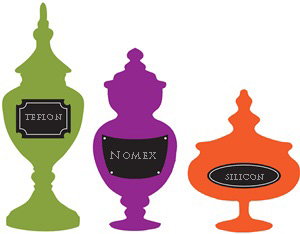People have been asking about when they should be using certain accessories. Mainly Nomex vs. foam, silicon vs. teflon, and when a teflon pillow is best used. So let’s break down each item and find out their strengths and weaknesses.
Nomex is a material found in a great deal of heat resistant safety gear. This makes it an ideal material to help cushion you Substrate. The material is incredibly dense and can withstand a great deal of compression and still bounce back. This means you can place it into your shirts, onesies, hats and other gear to help even out those seams without worry. It is also cutable so you can custom cut the pad to whatever substrate you are using. There are a few downsides to this  material, one is that it does absorb sublimation ink, which means it can the re-release that ink onto whatever substrate you’re using. This leads us to another weakness, its price. A great product does come at a price, which makes this a costly yet worthwhile replacement if it gets ruined.
material, one is that it does absorb sublimation ink, which means it can the re-release that ink onto whatever substrate you’re using. This leads us to another weakness, its price. A great product does come at a price, which makes this a costly yet worthwhile replacement if it gets ruined.
Foam pillows are an inexpensive alternative to the Nomex pads. Now while they can perform a lot of the same roles that the Nomex they do lack in the amount of bounce back due to not having the same density that the Nomex does. They also have the absorption problem that the Nomex has. Though, at the low cost of this product and the wide variety of sizes they are a must have for any shop.
Teflon sheets are great multi-tools. They protect your top plate when using opaque transfers and keep ink off your bottom platen during sublimation. They also give you that little added weight when placing transfers on shirts, which also means it, will keep your sublimation sheets down and help eliminate ghosting when bringing the platen up. The Teflon also has the nice bonus effect of adding a glossy effect to your heat transfers. Simply place it over your shirt after pressing and press for an additional 10 seconds.
Silicone sheets have many uses, including protecting images during heat pressing, avoiding sublimation ink bleeding onto your heat press or bleeding between fabric layers. A silicone sheet can be used multiple times (approximately 5-10 times) until you feel that is no longer usable from either discoloration or ink coverage. Silicon sheets also have the ability to add a matte finish to your heat transfers. Simply place it on the image after pressing and press again for about 10 seconds.
